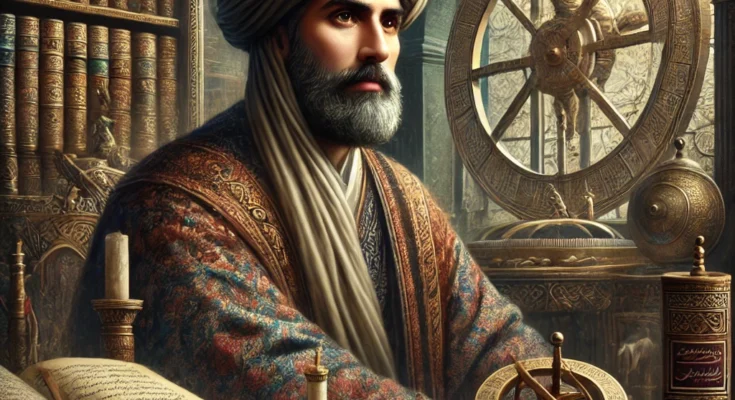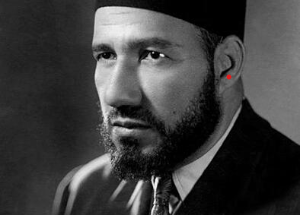Life and Education
Ibn Sina the father of early modern medicine, better known in the West by the Latin name Avicenna, was born in 980 AD in the village of Afshana near Bukhara-detonated in present-day Uzbekistan-in the region that was then part of the Persian Samanid Empire. His given name was Abu Ali al-Husayn ibn Abdullah ibn Sina, but he is best known as Ibn Sina. His father Abdullah was a respectable local governor, and his mother Sitara came from the village of Afshana. Born in an intellectually stimulating atmosphere, Ibn Sina proved to be significantly bright since his childhood years. His father recognized this capability in him and gave him the best education possible in Bukhara, then one of the giant centers of learning in the Islamic world.
Ibn Sina began his education with the Quran and Arabic literature, which he mastered at the tender age of ten years. His curiosity soon developed into an insatiable thirst to know about a large number of subjects that came to include mathematics, astronomy, philosophy, and natural sciences. Recognizing his intellectual potential, his father presented him to prominent scholars who mentored him in diverse fields. The same early teacher, Abu Abdullah Natili, instructed him in logic, philosophy, and metaphysics; this would later influence Ibn Sina’s philosophical outlook. By his early teens, he was beyond his tutors and went on to teach himself advanced subjects, which included medicine, starting when he was only 16. Medicine proved relatively easy compared to other subjects, and by age 18, he had started practicing. His reputation as a knowledgeable physician spread rapidly and helped him gain access to very important circles of influence that would prepare the way for his accomplishments later on.
Medical Practice and Breakthroughs.
The first field Ibn Sina went into was medicine, and it was a very groundbreaking one. At 18 years old, he treated the ruler of the Samanid, Nuh ibn Mansur, for a mysterious illness that other physicians had given up on. For this, Ibn Sina received considerable recognition, which would give him access to more and bigger libraries to fuel his research and intellectual pursuits. Medicine during Ibn Sina’s time was a mixture of classical Greek medical theories with Islamic developments in diagnosis, pharmacology, and treatment. Yet, Ibn Sina approached medicine quite differently from many of his contemporaries, in seeking for the first time to give the subject a scientific weight, with emphasis on observation, diagnosis, and the classification of diseases.
His career was marked throughout by outstanding contributions to anatomy, pharmacology, and pathology, most of which were recorded in his celebrated book The Canon of Medicine (Al-Qanun fi al-Tibb). This five-volume encyclopedia systematically gathered and built upon the medical knowledge of the period and thus formed a comprehensive text that was used both in the Islamic world and in Europe for hundreds of years. Now, The Canon brought new concepts like contagious diseases, the spread of disease through contaminated water and soil, and the significance of quarantine in preventing the spread of infections. His work also maintained that the subject of clinical trials for testing new drugs was an important one, a belief that would later form the bedrock of modern pharmacology.
Philosophy and Scientific Achievements./Father of Early Modern Medicine
Apart from the above-mentioned medical contributions, Ibn Sina was also an influential philosopher, whose works influenced Islamic and Western thought for centuries. Deeply influenced by Aristotle and Neoplatonism, he nevertheless endeavored to synthesize Greek philosophy with Islamic theology. His major philosophical work is the Kitab al-Shifa (The Book of Healing)-an encyclopedic treatise treating logic, natural sciences, psychology, metaphysics, and ethics. His philosophical works had a goal of reconciling reason with faith; true understanding, he explained, could only be arrived at when rational inquiry combined spiritual insight.
Ibn Sina’s most important philosophical contribution was his theory of knowledge and existence, especially the distinction between essence and existence, upon which many scholars, both Islamic and European, relied for years in their scholarly pursuits. He confirmed that everything has an essence, showing the nature of the thing in question, its existence is, however, another factor-it was given to it by a necessary being. It became one of the cornerstones in later discussions and was more developed by scholars such as Thomas Aquinas and Maimonides. Ibn Sina’s argument on the existence of a necessary being also caught the interest of many Islamic theologians and philosophers and earned him a place among the deepest thinkers in Islamic philosophy.
Besides philosophy and medicine, Ibn Sina made serious contributions to physics, mathematics, astronomy, and chemistry. In physics, he discussed the questions of motion, force, and vacuum with ideas that presaged the theories of mechanics propounded by Sir Isaac Newton. In mathematics, he studied such subjects as algebra and geometry, building on previous works done by early mathematicians like al-Khwarizmi. It is in optics that he did much research, mainly on the nature of light, including refraction and reflection. His astronomical studies led him to formulate theories on the nature of stars, planets, and celestial spheres that later influenced astronomers in both the Islamic world and Europe.
Political Life and Trials of the father of Early modern medicine
The life of Ibn Sina, despite his engrossing interest in science, was quite far from being uneventful. The political turmoil of the Samanid Empire and the succeeding dynasties made him lead a nomadic life. The collapse of the Samanid dynasty in 999 AD hurled Ibn Sina into a purposeless existence of wandering from court to court in search of patrons who would provide him wherewithal and stability in pursuit of his studies. Most of his political alliances placed him in precarious positions, especially whenever there was rivalry among factions for the control of the regions in which he lived. All his life, he was both a physician and an advisor, even a vizier to some ruling houses, exposing him to court intrigues and political conflicts.
At the court of Buyid ruler Shams al-Dawla in Hamadan, Ibn Sina continued with his medical and philosophical work. His eminence and outspokenness brought him into tension with the ruling elite and the conservative religious scholars, who considered his philosophical ideas controversial. He was once even imprisoned, which stalled his activities for some time, but this did not prevent him from writing and theorizing, even during imprisonment. Despite his political ills, Ibn Sina did not stop there in the field of learning. A physician by status, it afforded him to go through very complex political milieus and to seek patronage from powerful patrons.
Legacy and Impact on Medicine and Philosophy
The works of Ibn Sina are profound and far-reaching, influencing the Islamic world and the West for centuries. The Canon of Medicine became a standard of medieval Europe, where it was translated into Latin and taught in medical schools right into the 17th century. It really is an incredibly detailed account of anatomy, and classification of diseases, innovative for his time, and set the foundation for the modern science of medicine. Pharmacology and pharmacotherapy were introduced, along with the concept of dosages and combinations of drugs, which are to date extremely crucial in medicine.
In philosophy, the synthesis of Islamic thought and Greek philosophy made by Ibn Sina would later influence innumerable generations of Islamic philosophers such as al-Ghazali and Ibn Rushd, known in the West as Averroes, in addition to Jewish and Christian thinkers. His metaphysics of being and causality, the nature of the soul, became the pivot on which both the Islamic and Western traditions of philosophical study bid. There are signs of his influence in the writings and treatises of Thomas Aquinas, who included some aspects of Ibn Sina’s philosophy in the body of Christian scholastic thought.
The intellectual legacy of Ibn Sina survives not only in his writings but also in the institutions that continued and continue, to uphold and celebrate the work of his lifetime. Medical schools, universities, and research centers throughout much of the world including North America and Western Europe recognized the importance of his contributions to science and philosophy. Today he is remembered as a true polymath, tirelessly pursuing knowledge across cultural and religious boundaries, linking the scientific and philosophic heritage of Ancient Greece, Persia, and the Islamic world.
Death and Posthumous Influence
The unrelenting intellectual toil and the stormy tide of his political life had finally taken their heavy toll on Ibn Sina’s health. In 1037, he fell ill at Hamadan, Persia, and died at the age of 57. He was buried in Hamadan, where his tomb remains a place of regard and respect to scholars and his admirers. His death sounded the last note of that era of achievement unmatched in human history until his influence could live on through writings and a legacy he had left behind. Many centuries afterward, his works would be studied, translated, and referred to by scholars both in the Islamic world and in Europe.
Indeed, posthumous fame as the “father of early modern medicine” and as a forerunner in philosophy underlines his contribution’s importance up to this day. Centuries later on, his works and life go on to awaken scholars, students, and intellectuals alike. It is interdisciplinary, and his commitment to the sciences and faith alike reveals, across the centuries, an undying model of how knowledge and belief can come together in search of truth. His writings and discoveries make Ibn Sina monumental in the breach between the ancient and modern worlds continued intellectual heritage lighting the path of scientific and philosophic inquiry.




Thanks very interesting blog!
thank you